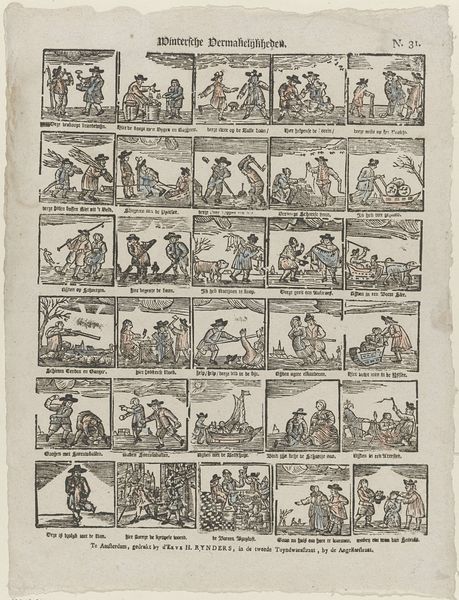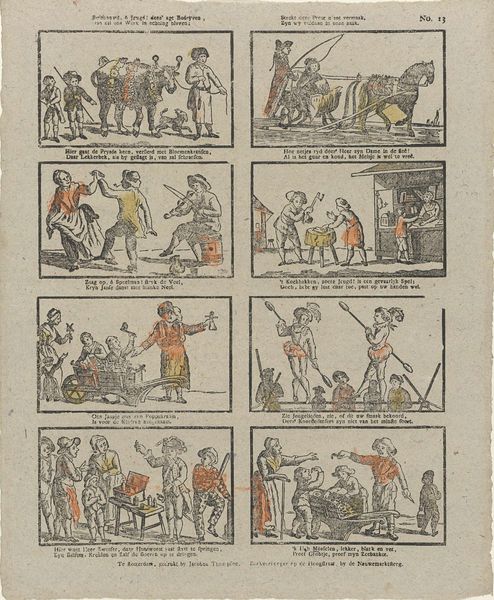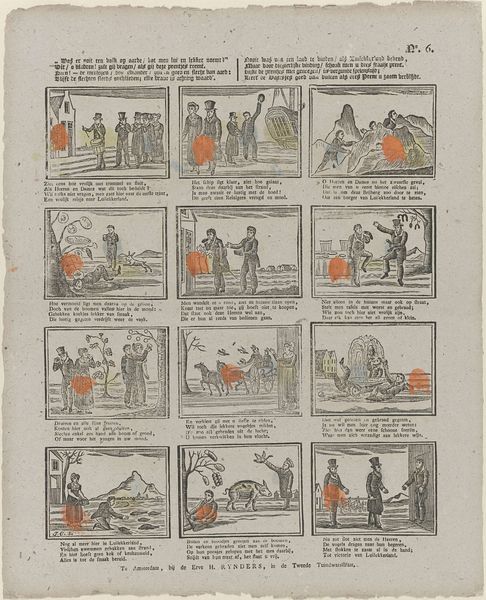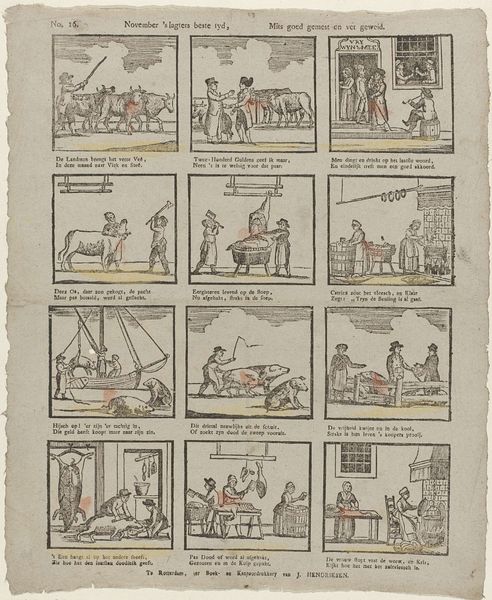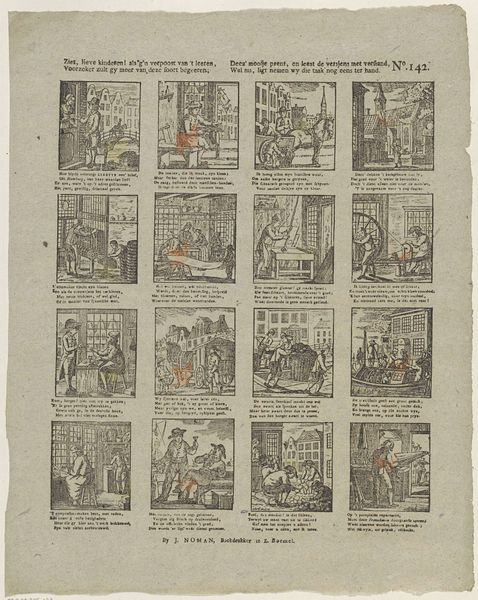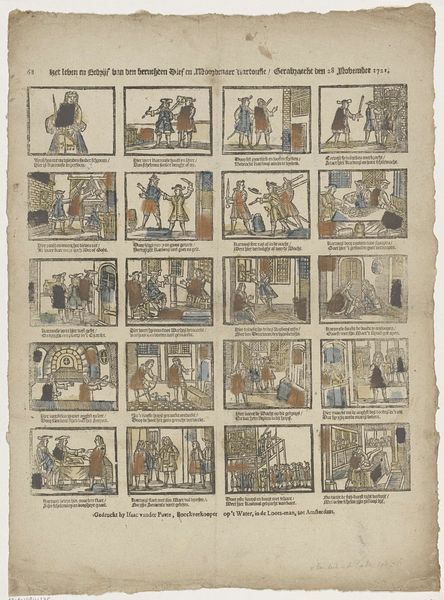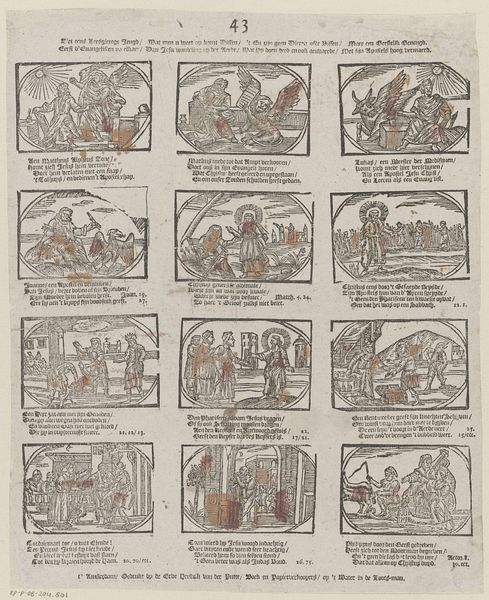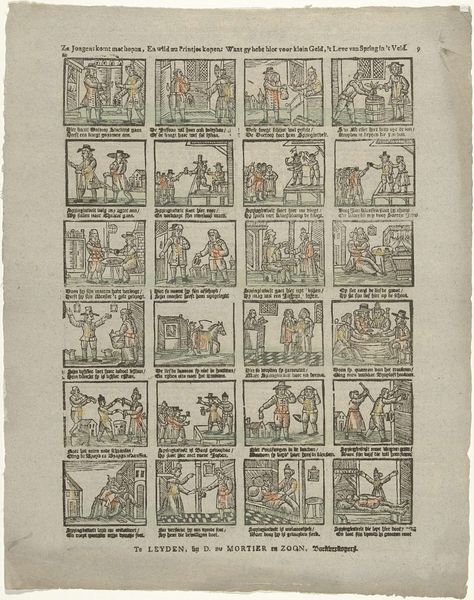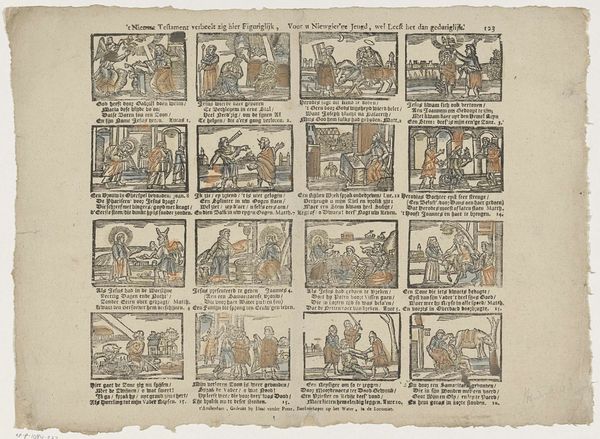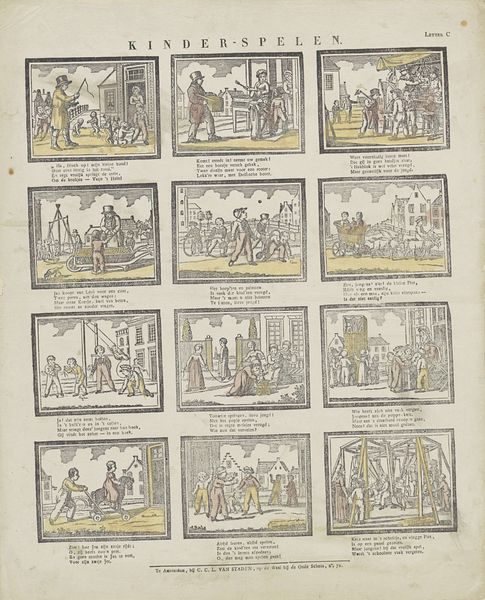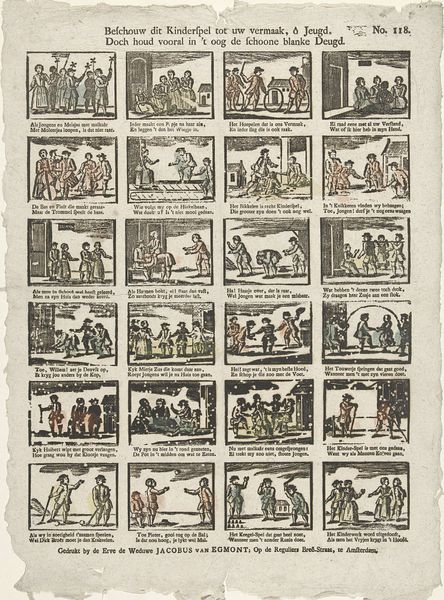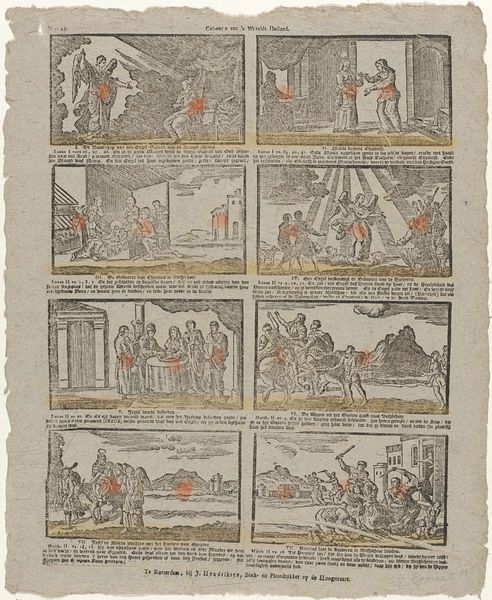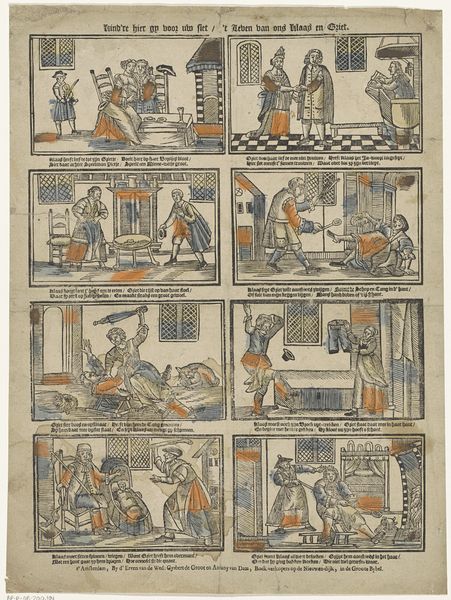
Het landmans leven is zeer goed / Als het gepaard gaat met voorspoed 1831 - 1854
0:00
0:00
ervehrynders
Rijksmuseum
print, engraving
#
narrative-art
#
dutch-golden-age
# print
#
old engraving style
#
folk-art
#
genre-painting
#
engraving
Dimensions: height 387 mm, width 275 mm
Copyright: Rijks Museum: Open Domain
Curator: At first glance, this print gives me a sense of nostalgia, like looking through the pages of an old storybook. The muted colors and quaint scenes evoke a simpler time. Editor: Indeed. This engraving, entitled "Het landmans leven is zeer goed / Als het gepaard gaat met voorspoed," which translates to "The farmer's life is very good / If it is accompanied by prosperity," comes from between 1831 and 1854, and was created by Erve H. Rynders. You can find this print held in the collection of the Rijksmuseum. Curator: The grid format immediately catches my eye, with each little window depicting a different facet of rural life. We see farmers tilling the land, tending to livestock, harvesting crops… Editor: It is a deliberate construction, isn’t it? The use of these organized vignettes invites us to consider the processes behind agricultural life in the nineteenth century, underscoring labor and its connection to the social value of agriculture in Dutch society. These depictions of the Dutch countryside really contributed to forming the bourgeois identity, too, reinforcing traditional ideas of work and family. Curator: Absolutely. And what I appreciate is the directness with which Rynders depicts these tasks. The actions and even little moments within these frames feel intimate, especially within each worker’s movements and positioning on the farm. Editor: When viewing art, it’s always essential to consider its social context. The nineteenth century was a time of immense change in Europe. Urbanization was rapidly increasing; with technological advancements impacting farming practices, art provided a way for viewers to reinforce conservative perspectives about rural, pre-industrial life. So it is intriguing to see such a blatant affirmation of agrarianism—particularly one emphasizing productivity alongside fortune! What sort of consumer would spend their money to purchase and install this work within the context of a rising merchant class? Curator: So true. When looked at from that perspective, there's a duality. It celebrates the perceived simplicity and wholesomeness of the agrarian lifestyle. Editor: I think considering this print as both a visual and material commodity—mass produced—invites complex questions about class, labor, and national identity. In short, beyond that charming facade, there lies an economic web worth unraveling to really come to understand this artwork’s total implications and influences within culture and society at large. Curator: A fruitful conclusion to a work rich with perspectives.
Comments
No comments
Be the first to comment and join the conversation on the ultimate creative platform.
